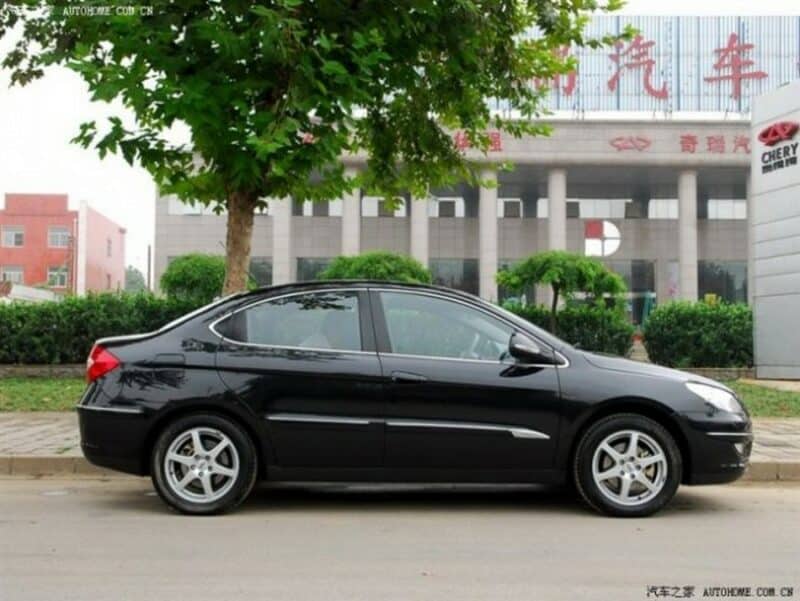The Big Read – Chery (2/4) – The Daewoo affair
In 2003, Chery freed itself from SAIC and produced the Chery Fengyun successfully. The Fengyun was basically a Seat Toledo with some Chinese adaptations. The car was comparable in size and technology to the Volkswagen Jetta, produced by FAW-VW, but a lot cheaper. So it sold rather well and created room for Chery to grow as a new car manufacturer.
The Toledo family
Chery had acquired the Fengyun production line and the drawings for the car from Seat and it was all the technology they possessed in the early days. So they did the obvious thing to do: get creative with the tools you have. The Fengyun, the English name is Fulwin, was at the start of a very long life cycle. The car received regular updates and price reductions and the model was produced until 2006. But that wasn’t the end of the Toledo-technology, because Chery produced several spin-offs.
The first of them was a long-wheelbase limousine version of the Fengyun. Chery stretched the car by 20 cm and it made an excellent taxi model. This car was sold between 2003 and 2006. The car also introduced a clever marketing stunt by Chery: it was said to be available with a BMW engine. In fact, it was the Brazilian Tritec-engine, jointly developed by Chrysler and MG Rover, which BMW inherited when they acquired the British manufacturer. The Tritec-engine was imported from Brazil and also appeared in some other Chery cars.
In 2003, Chery also introduced the Qiyun (or Cowin in English). This car was very similar to the Fengyun, both in looks and technology, but it was positioned below the early model with an even lower price. In 2010, the car received a large update and was renamed Cowin-2, to fit in line with a range of cars bearing the Cowin name. By then, the Ford and Tritec engines were replaced by Chery’s own design, but more on that later. The Cowin-2 survived until 2016.
The last variety was a car that combined the Fengyun front end with a large cargo box rear. A vehicle similar to for instance the Volkswagen Caddy. Like the Caddy, it was available in cargo and passenger models and Chery initially called it the Chery Qirui (or Karry in English). In 2006, Chery acquired FAW Yangzi Automobile (one of Wuhu’s early automotive exploits, see part 1 of the story) and eventually renamed it Chery Commercial Vehicles. Karry became the brand name for Chery’s commercial vehicles, so the Chery Karry morphed into the Karry Youyi and was sold until 2012.
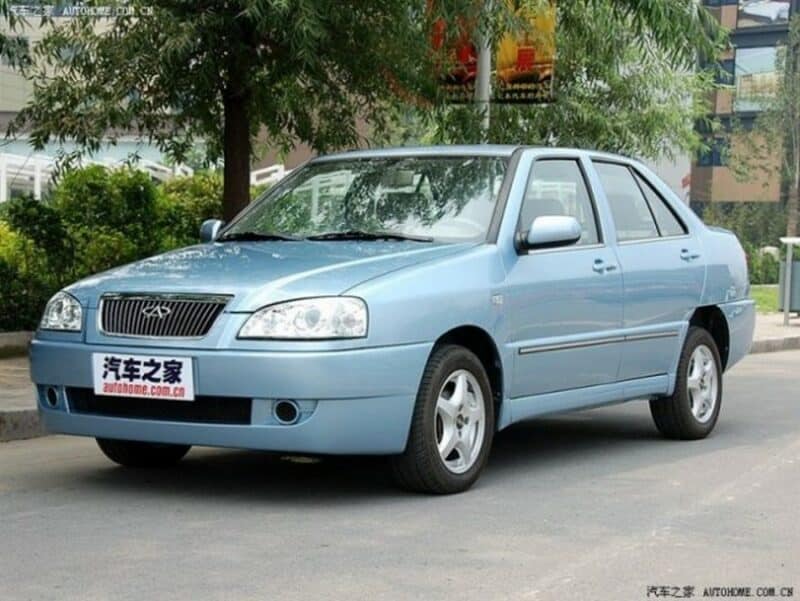


The technical challenge
One product is not enough to build a brand and the people at Chery were aware of this. So they were looking for ways to develop the company. This may seem pretty straightforward, design something, build it, and sell it, but it sure wasn’t that simple. China’s car makers entered a mature industry, while themselves still being infants. Chery had started from scratch without any experience or history to fall back on, so the challenge was even greater.
For larger state-owned car companies there was often a foreign joint venture partner to rely on. The partner could supply an old platform and an engine, while the Chinese brand would design a body. Technology development was not a primary concern. That would only come much later. For private startups it was different. They often began by buying an abandoned product or production line and setting up some kind of research & development. Many startups had limited capability, weren’t that bothered about intellectual property, and simply reversed engineered a competitor’s product.


Chery did something in between or even a bit of both. Zhan Xialai was the communist party official in charge of the administrative side of the Wuhu car project. He wanted to find a suitable partner that could provide a technology platform or even a finished product. Yin Tongyue was an engineer in charge of the technical side of Chery Automobile. He liked to develop things himself and make original products. It could be the start of a clash between the two, but it wasn’t. They both got their way.
Yin’s way was to set up several R&D groups, car design or alternative propulsion for example. But of course, he quickly hit the limits of the technical capabilities available. So, instead of doing everything in-house, he chose to team up with respectable international partners. European companies like Bosch and Ricardo did work for Chery and he also engaged studios like Pininfarina and Bertone.
One example of his approach is ACTECO. Chery had a fully operational engine factory but produced a rather outdated Ford design. Yin approached research company AVL and ordered a complete line of new engines. Everything from small three-cylinder engines to even a 3-liter V6-unit. Design parameters were set in China, but AVL did the grunt of the design work. This led to Chery producing its own line of engines under the ACTECO banner, a rather exceptional achievement among China’s car brands.
Zhan’s approach led to a far more common occurrence in the Chinese car industry: a lawsuit over copyright infringements.

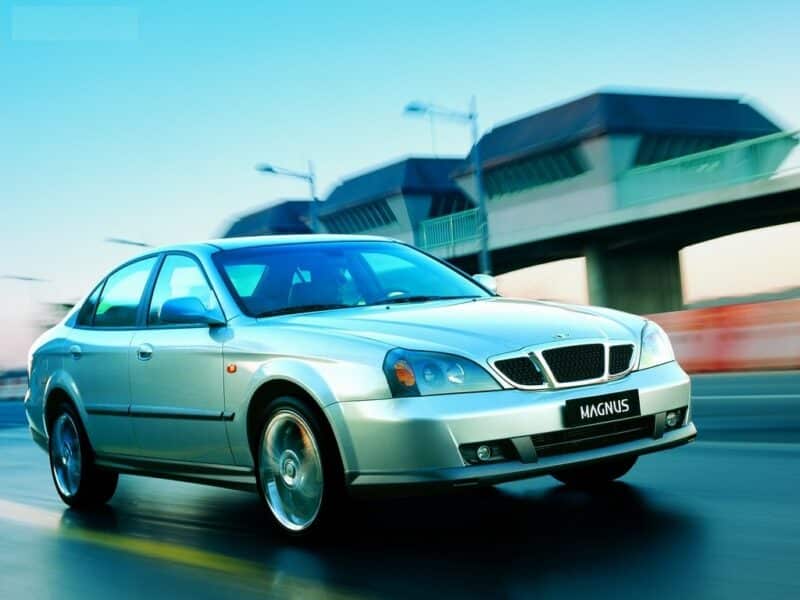
The Daewoo connection
In 2000, a delegation from Anhui province went to South Korea. The delegation consisted of representatives from three local car manufacturers: Tongbao, Anchi, and Chery. The purpose of the visit was a meeting with executives of Daewoo Motors, a large Korean car manufacturer. Of course, Zhan Xialai was among the delegates. This meeting was the source of a bit of trouble later on.
Daewoo Motors was one of many companies in the Daewoo ‘chaebol’, a type of conglomerate that engaged in many different types of activities. Car manufacturing was one of those activities. In the decade prior, Daewwo Motors had become quite a large manufacturer with exports to many countries, but the company was hit hard by the Asian financial crisis. In 2000 it was in dire need of money and on the brink of bankruptcy.
The objective of this meeting was rather obvious. Daewoo desperately needed money and the Chinese were looking for a product. And Daewoo had exactly what they needed, a small car by the name of Matiz. This car was very successful in many Asian markets because of its modern and friendly design. It was designed by ItalDesign studio as a Fiat concept, but the Italian brand rejected it.
The Daewoo connection came courtesy of Anchi, that already made an older Daewoo Tico under license. More about Anchi here. What exactly came of the meeting remains unknown as there are no official records. But historian Erik van Ingen-Schenau was shown a donated Matiz (for research purposes) during a visit to the Tongbao factory in 2001. Neither Tongbao nor Anchi would build the Matiz, but the design ended in Chery’s lap.





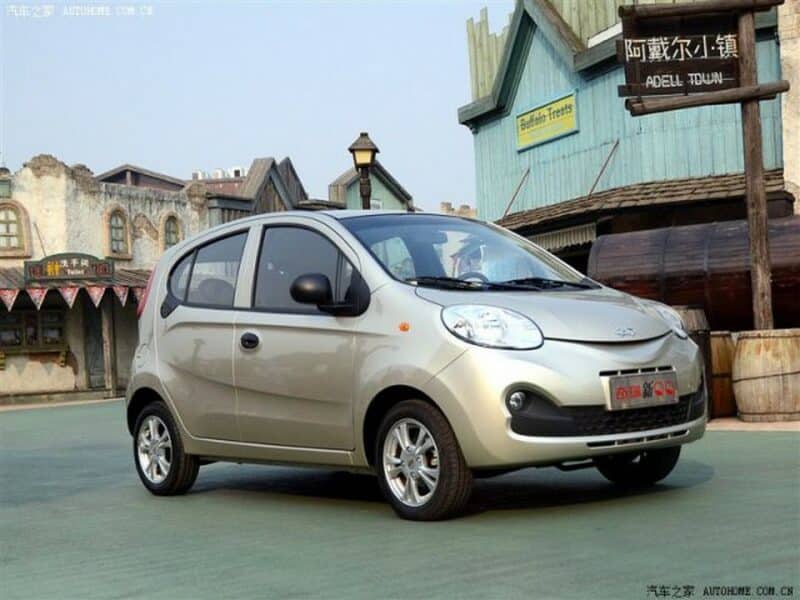
Yin Tongyue had lured the chief designer from Dongfeng Citroen (in charge of the Fukang models) to join his new design department. He made subtle changes to the Daewoo design, like adding a new front bumper that made the car look like it was smiling. In 2003, the car hit the Chinese market as Chery QQ, powered by an 800cc ACTECO engine. The QQ was cute, cheap, and well-built, so you can guess what’s coming: it became a huge sales success.
The hatchback model was renamed QQ3 in 2006 after a small facelift. At the same time, Chery began to introduce a number of self-developed variants. The QQ6 was a sedan model and the QQme was a rather bizarre-looking two-door supermini. The QQ6 was later renamed Cowin-1. The last derivative didn’t share the QQ name but was called A1 instead. It was a small crossover. The different QQ models were produced until 2015, when it was succeeded by a far less successful second generation.
General Motors is not amused
It didn’t end well for Daewoo Motors. The company didn’t survive the financial problems and went bankrupt. General Motors bought the bankrupt estate and the company became GM Korea. The Matiz then also made it to the United States as Chevrolet Spark and enjoyed success there as well. The Americans also introduced the car in China as Chevrolet Lechi (and later Baojun Lechi) and that put it in direct competition with the Chery QQ.
When the Chevrolet engineers examined one of the Chery cars, they discovered it shared remarkably identical body structure, exterior design, interior design, and key components. Many parts, like the doors, were interchangeable without any modifications. Chevrolet executives went as far as calling the QQ a carbon copy and in December 2004 started a lawsuit in China for theft of intellectual property.
Unfortunately, we don’t know the exact details of the case, because it was settled out of court. Chery always denied having copied the design, they maintained they had paid to acquire the design. But we don’t know what is the truth. It seems likely that Chery somehow acquired the design, but it is entirely possible that they didn’t pay Daewoo. It’s been known from other cases that some Daewoo employees, facing unemployment, took home quite some company information during the dying days of the brand and sold it to anyone who wanted to have it.
Chery not only obtained the Matiz design but also the blueprints of the Daewoo Magnus. This was a midsize sedan. It got the same treatment as the Matiz, making subtle design changes and powering it with ACTECO engines, and launched in 2003 as Chery Eastar (Dongfangzhizi is the Chinese name, later renamed Cowin-3). The Magnus was selling in much smaller numbers than the Matiz and for some reason, GM didn’t bother to sue Chery over this car.
The game changer
This wasn’t the only time Chery was accused of copying. In 2005, it introduced a compact SUV named Tiggo that looked quite like a Toyota RAV4. A year later followed the Chery A5 (later renamed Cowin-3) which resembled the Nissan Altima. Technically these cars were based on the Magnus/Eastar platform, so it was just the body design that looked familiar.

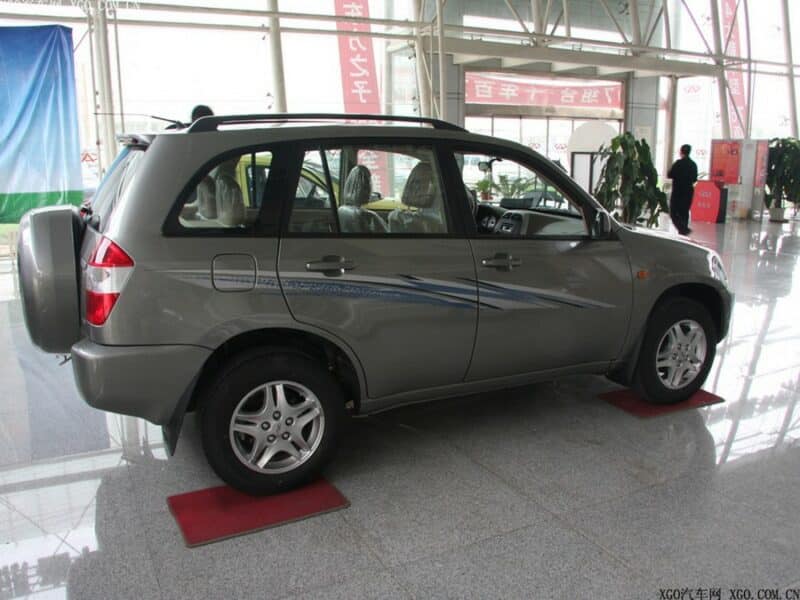
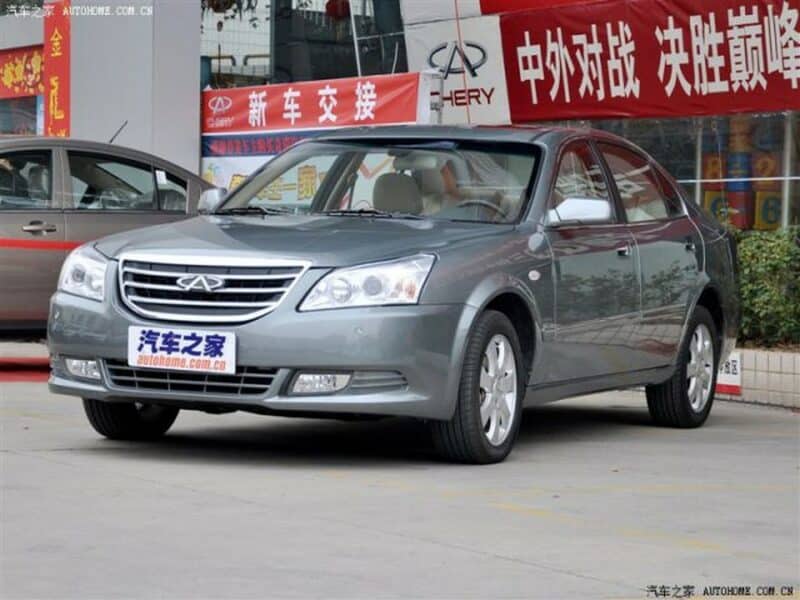
So the early designs were at least controversial, but things changed radically in 2008. That’s when Yin Tongyue’s efforts started to pay off. During the celebrations of producing its millionth car (a first for a Chinese brand) in August 2007, Yin Tongyue revealed the Chery A3. This car was already previewed as a concept vehicle at the 2006 Beijing Auto Show. After the reveal, Chery launched a huge promotional campaign, including a 66-day “permanent test drive” from Beijing to Wuhu. In the summer of 2008, the first customers received their A3.
Now, what’s so special about the Chery A3? The answer is, it completely changed the public opinion about the brand. Chery was selling very well, but it was a budget brand in the eyes of the public. The QQ was cute, but firmly aimed at the bottom of the market. The Toledo-based models were cheap, but not very state-of-the-art. The other models were of reasonable quality for an attractive price but imitated the styling of well-known models. The A3 was a big diversion from all of that.
First of all, it was styled by the famous studio Pininfarina. The result was a modern-looking, well-balanced compact sedan that had its own identity. It didn’t look like any competitor. The platform was developed by Chery in-house and was right on par with the joint venture offerings. It had a body structure containing 40% high-strength steel and had safety options like airbags, ABS, and EBD as standard. Updated ACTECO engines ranging from 1.6 to 2.0 liters provided the power.
The efforts paid off. The A3 was the first Chinese-developed car that got a 5-star rating in the China-NCAP safety test. It is also widely regarded as a turning point in the Chinese car industry. A modern, sleek, and understated design with modern technology and excellent safety was not seen before from a Chinese manufacturer. And on top of that, the car still was very affordable, only slightly more expensive than the now decade-old Toledo-based designs.
The A3 changed Chery’s image for the better and it did sell well. Still, it didn’t match the joint venture products like Toyota or Volkswagen, but it put Chery well ahead of the domestic competition. Following the launch of the A3, Chery’s domestic sales grew from just over 300.000 in 2008 to 550.000 in 2010 and 2011. Chery would not sell so many cars again until 2021.
Next week
Brand madness! Chery introduces one new brand after another.






